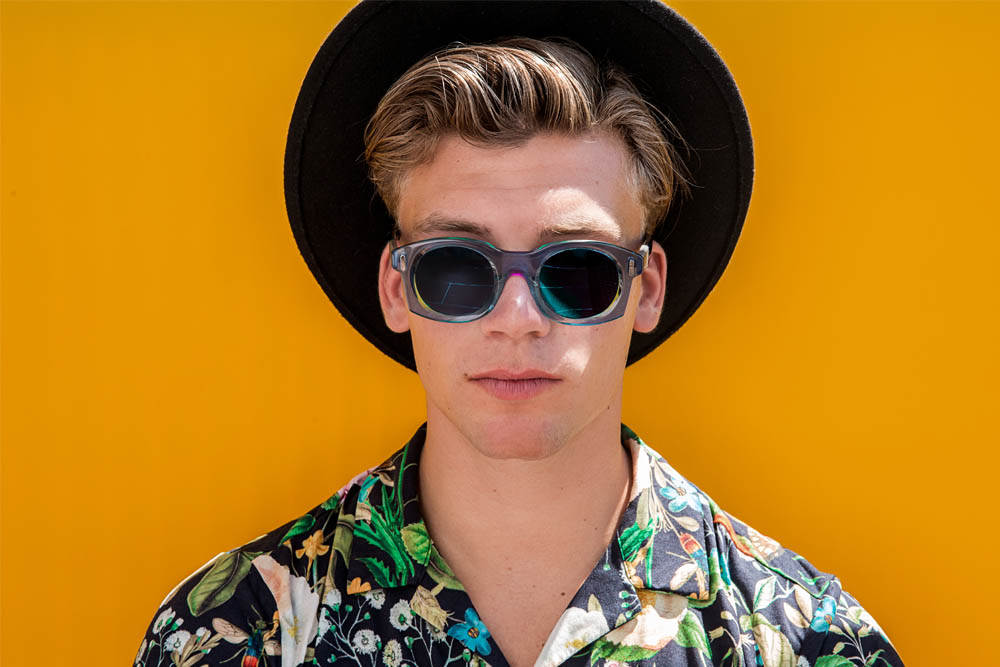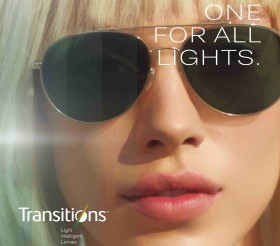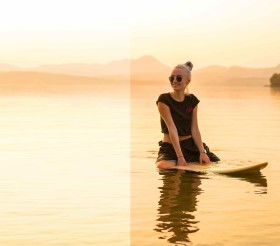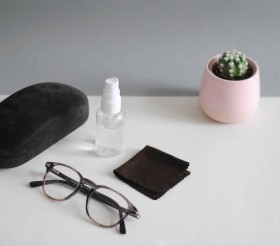Usually, when buying sunglasses, many of us focus on the frame and the color of the shades. Another essential thing is to check if your sunglasses have UV protective coating. The UV coating is crucially important since it protects your eyes from the damaging UV radiation.
What is UV radiation?
The UV stands for ultraviolet, which is the invisible part of the spectrum of electromagnetic radiation with a wavelength from 100 nm to 400 nm. We divide it into three types: UVA, UVB, and UVC. Increased exposure to UV light can cause permanent eye damage, cataracts, or even corneal inflammation.
The main difference between each UV radiation is its range of and how it affects our skin.
UVA - UVA radiation has the longest wavelength and it reaches deep into skin layers, causing wrinkling and aging. It’s prevalent in all seasons - so you should protect your skin and eyes all year long.
UVB - UVB radiation has the highest impact on our health, excessive dose of UVB radiation is causing sunburns, redness, or even skin cancer.
UCV - UVC radiation have the shortest wavelength, which means it does not pass through the atmospheric zone.
Symptoms of damage from UV exposure
• Blurry vision
• Eyesore
• Redness in the eye
• Light sensitivity
• Temporarily loss of vision
MYTH N. 1 - I don't need to wear sunglasses in cloudy weather or winter
Approximately 90 percent of UV rays penetrate through clouds. UV rays reflect from surfaces such as snow, roads, sand, water, and glass. Sunglasses are crucial eye protection in any weather conditions. Even 50 percent of UV radiation can penetrate to the eye even if you are standing in the shadow.
MYTH N.2 - Children don't have to wear sunglasses
Children usually spend more time outdoors than adults - many children’s activities are outdoor-based, e.g. playtime, sports, or school. Children's eyes are much more vulnerable than adult eyes because they are not yet sufficiently developed. Teach your offspring to wear sunglasses every time they are outside and how to take care of them. Unfortunately, most of the sun damage happens before turning the age of 18.
Children (especially younger than 2 years) should be protected as much as possible during the sunny days. Direct sunlight falling on a sensitive child's eye can lead to dry eye syndrome, or eyelids and corneas inflammation. Kids want to be like grown-ups - when they see you wearing sunglasses regularly, they are willing to follow your example.
MYTH N. 3 - All sunglasses have UVA or UVB filter
Poor quality of lenses or fake sunglasses has insufficient protection against harmful UV radiation. Some of the sunglasses are just fashionable accessories - they don’t have a protective function. When buying sunglasses, always check if they have a sticker or tag UV protection and make sure you are buying eyewear from a certified seller, such eyerim is.
Every piece of eyewear eyerim provides, has 100% UV protection - prescription glasses are not an exception. All prescription glasses and sunglasses you can find on eyerim have UV protection - to keep your eyes safe from UV exposure.
MYTH N. 4 - Darker lenses means better protection
Don’t get confused that darker lenses tint provides better protection. Dark lenses without UV protection can damage your eyes. These lenses dilate your pupils more than a lighter lens color - more harmful rays will penetrate to your eye, causing damage.
HOW TO RELIEVE EYE STRAIN?
• Pay attention to proper lighting, not just when reading.
• Try to blink often when working with a computer or watching TV.
• Take regular breaks - take a break from the monitor after each hour or you can follow the rule of 20-20-20. This rule tells you to take at least a 20-second break from looking at the display every 20 minutes and look at an object 20 meters away from you.
When working with a computer daily, you should protect your eyes from harmful blue light radiation - with blue light protection eyewear. For those who wear prescription glasses, add a blue light protection layer to all prescription glasses on eyerim. If you don’t have to wear glasses, choose non-prescription fashion glasses, and just add a blue light coating.
If you spend most of your time outdoors, prescription sunglasses are the right choice for you. Prescription sunglasses combine the functions of prescription glasses and sunglasses: vision correction and UV protection.
When driving - glare, darkness, bad weather conditions, direct light, foggy environment, and many other factors significantly weaken your vision. Driving glasses provide 100% UV protection and highlight colors, contrasts, and road contours.
Polarized sunglasses provide extra protection against blinding reflections from surfaces such as roads, water, or even snow. Polarised sunglasses (or even prescription glasses) are an ideal choice for athletes or even drivers.
If you want to keep your eyes safe and protect them, it is necessary to wear quality sunglasses with UV protection. In the end, sunglasses protect your eyes even from dust or wind. Find the perfect sunglasses for you on eyerim.com.














